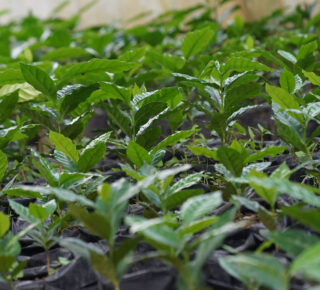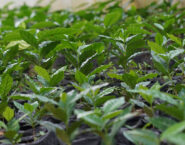
The history of coffee is a bit of a delicious mystery. We don’t have official documentation to confirm exactly who discovered coffee trees for the first time, or who invented coffee as the beverage we know today. However, we do have colorful legends we can use to piece together a rich tapestry of coffee history—and follow coffee’s journey across the globe.
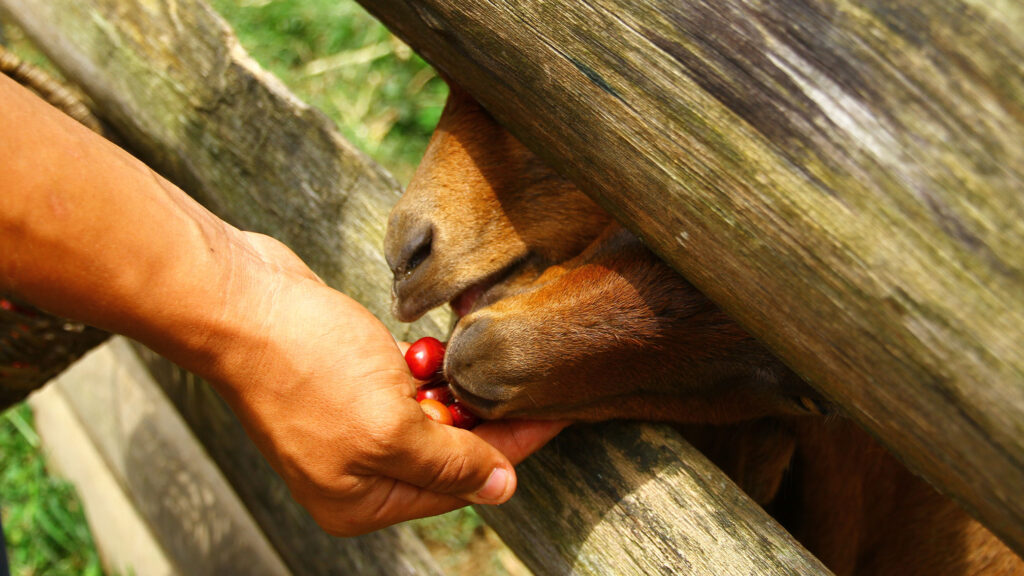
9th Century: Innovation on the Ethiopian Plateau
According to legend, a goat herder named Kaldi was the first person who discovered coffee beans and their benefits. Kaldi noticed that after his goats ate the cherries of a particular tree in the ancient coffee forests of the Ethiopian plateau, they were so full of energy that they didn’t want to sleep at night.
Kaldi reported his findings to the abbot of the local monastery, who struggled to stay awake during the long hours of evening prayer. The abbot made a drink with the cherries and found that it kept him alert. In other words, according to the story, the person who invented coffee did so for the most relatable reason possible.
After the abbot shared his discovery with the other monks at the monastery—sharing is caring, after all—knowledge of the energizing berries began to spread, moving east.
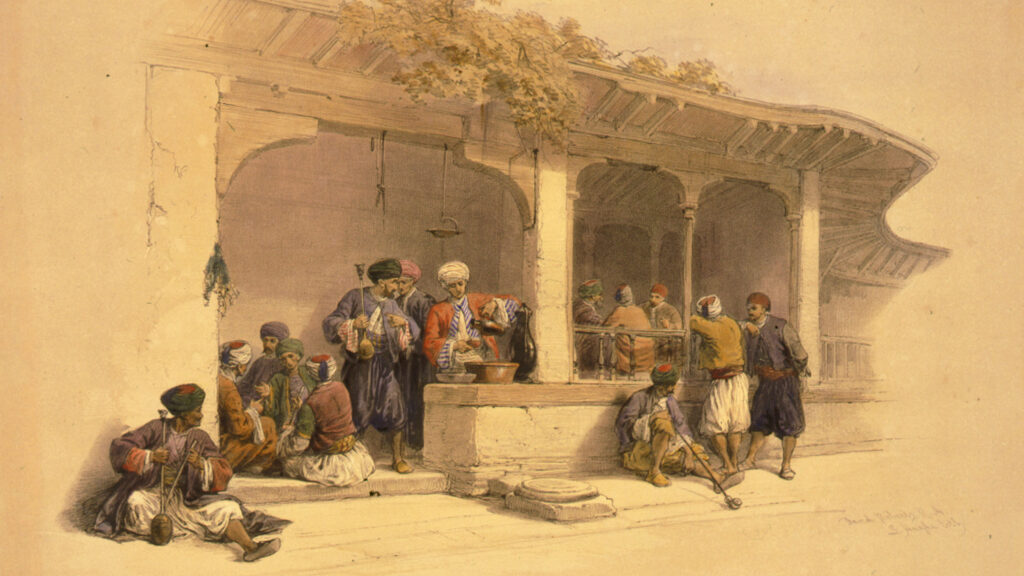
15th-16th Centuries: Coffee Culture Develops on the Arabian Peninsula
The business edition of coffee history began on the Arabian Peninsula, where people cultivated and traded coffee for the first time. By the 15th century, coffee was being grown in what is now Yemen, and by the 16th century it gained popularity in what we now know as Iran, Egypt, Syria, and Turkey.
Wisdom in a cup
At this time, you could drink coffee at home, but you might also go to one of the many public coffee houses, or qahveh khaneh, that had started popping up in cities across the region now referred to as the Middle East. At these thriving social hubs, you not only could sip your coffee and chat, but you could listen to music, watch performances, play chess, and stay current on the news. In fact, coffee houses were so vital to the exchange of information at the time that they were also known as “Schools of the Wise.”
The Arabian Peninsula attracted thousands of travelers each year, including those making the pilgrimage to the holy city of Mecca. As these pilgrims traveled home, they spread the knowledge of these coffee houses and the “wine of Araby” served there.
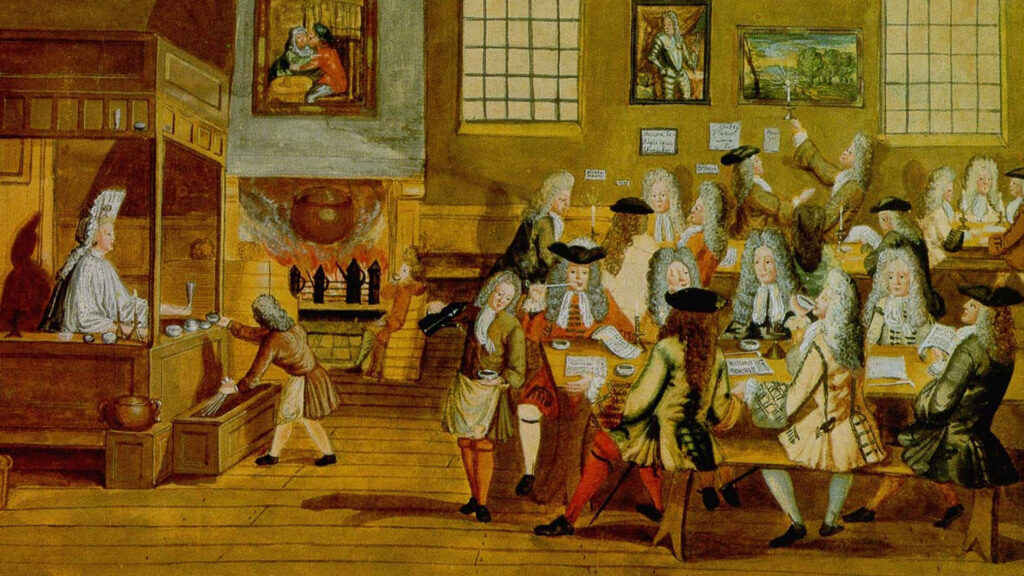
17th Century: Growth of Coffee Consumption in Europe
By the 17th century, coffee had made its way to Europe and was becoming popular across the continent.
A threat and a triumph
Not everyone embraced coffee right away. Some people reacted with suspicion and fear, even going so far as to call it the “bitter invention of Satan.” When coffee came to Venice in 1615, local clergy condemned it, sparking a controversy so great that Pope Clement VIII was asked to intervene. After tasting coffee for himself, he found it so satisfying that he gave it papal approval.
Penny universities
Despite such controversies, European coffee houses rapidly sprang up in the major cities of England, Austria, France, Germany, and Holland, acting as major social hubs and mirroring the qahveh khaneh in the Middle East. Much like the “Schools of the Wise,” at England’s “penny universities,” you could purchase both a cup of coffee and stimulating conversation—for a penny, of course.
Coffee at work
Until this time, the most common breakfast beverages were beer and wine—neither known for sharpening focus or productivity. As coffee became more widely available, people began drinking it to start their day instead, feeling more alert and energized and improving the quality of their work. Coffee has been working hard for working people for centuries!
Early business incubators
By the mid-17th century, there were over 300 coffee houses in London, and many of them became “specialized” as they attracted like-minded customers. Some of these coffee houses catered to merchants, for example, while others drew in artists or brokers. Businesses even emerged from these specialized coffee houses—Lloyd’s of London, the global insurance marketplace, began at the Edward Lloyd’s Coffee House.
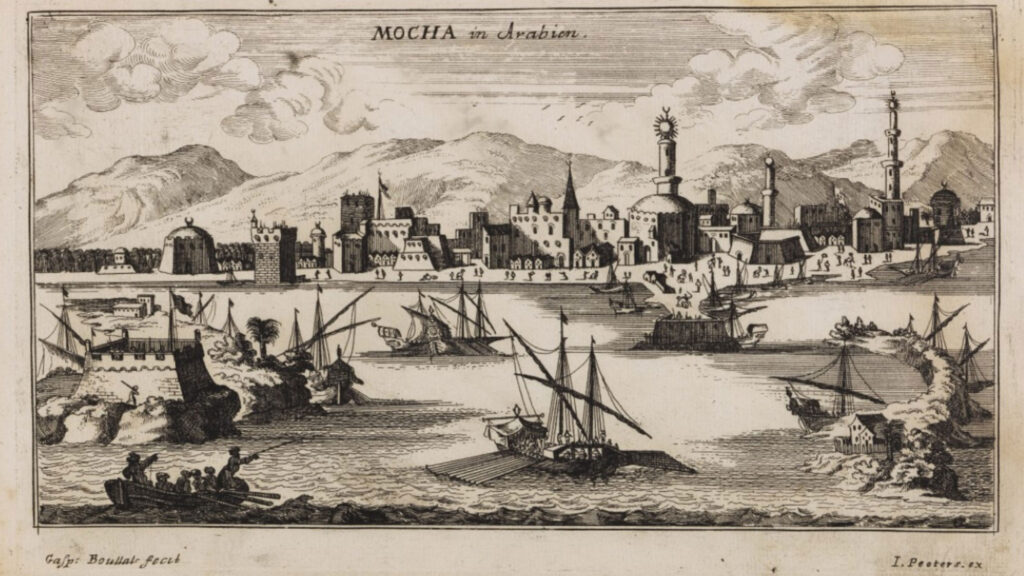
17th Century: Rise of Coffee Plantations in Asia
As demand for coffee continued to spread, there was fierce competition to produce coffee beyond Arabia.
The Dutch finally got coffee tree seedlings in the latter half of the 17th century. Their first attempts to grow them in India failed, but they were successful with their efforts in what is now Indonesia, on the island of Java. The trees thrived and soon the Dutch had a productive and growing trade in coffee. They then expanded the cultivation of coffee trees to the islands of Sumatra and Sulawesi.
The Dutch also created the world’s first coffee blend in Indonesia, combining Arabian coffee (also called Mocha, after the famous Yemeni port city) with coffee grown on Java. This blend has endured, and you can still enjoy a fresh cup of Mocha Java today.
Nearly 200 years later, French missionaries introduced the coffee tree to Vietnam. The missionaries brought arabica trees from the island of Bourbon and planted them around Tonkin in the mid-19th century.
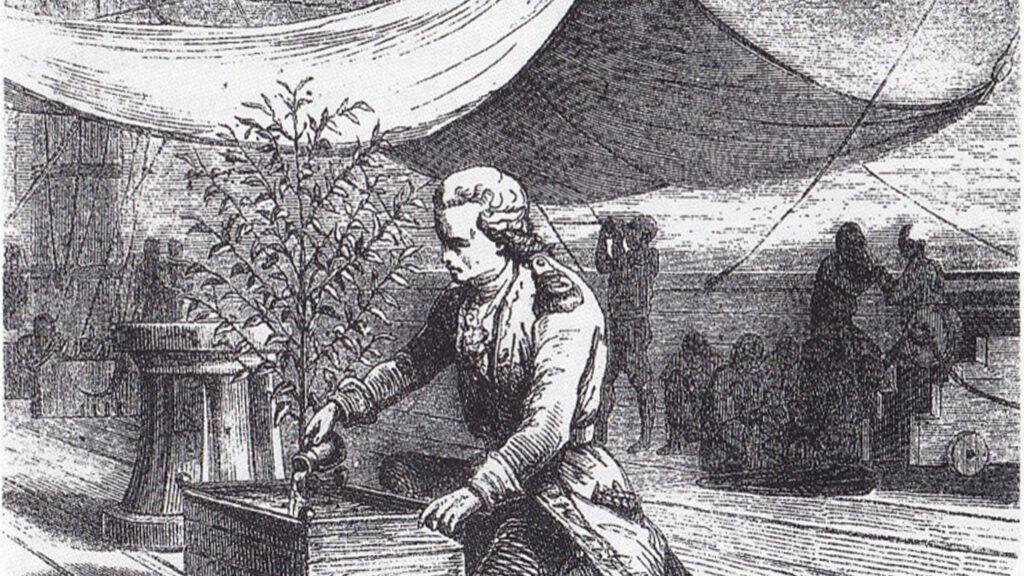
18th Century: The Seed is Planted for Coffee in the Americas
In 1714, the Mayor of Amsterdam presented a gift of a young coffee tree to King Louis XIV of France. The King ordered it to be planted in the Royal Botanical Garden in Paris, and in 1723, Gabriel de Clieu, a young naval officer, obtained a seedling from the king’s tree. Despite a challenging voyage featuring horrific weather, a pirate attack, and even a saboteur who tried to destroy the seedling, he managed to transport it safely to Martinique.
Small seedling, enormous impact
Once planted, the seedling thrived. We have that first coffee tree to thank for the spread of coffee throughout the Americas, including more than 18 million coffee trees that grew on the island of Martinique over the next 50 years. However, that seedling also served as the parent for all the first coffee trees in the Caribbean as well as South and Central America. Raise your mug to that hearty, groundbreaking coffee tree—we owe it a great deal!
Born from a bouquet
Coffee arrived in Brazil thanks to the efforts (and charms) of Francisco de Mello Palheta, a Portuguese military officer sent by the emperor to French Guiana to get coffee seedlings. The French were not willing to share—global competition in the coffee trade was still fierce—but lucky for de Mello Palheta, he happened to be quite handsome. Captivated by him, the French Governor’s wife gave him a large bouquet of flowers before he left. Buried inside were enough coffee seeds to begin what is today a billion-dollar industry in Brazil.
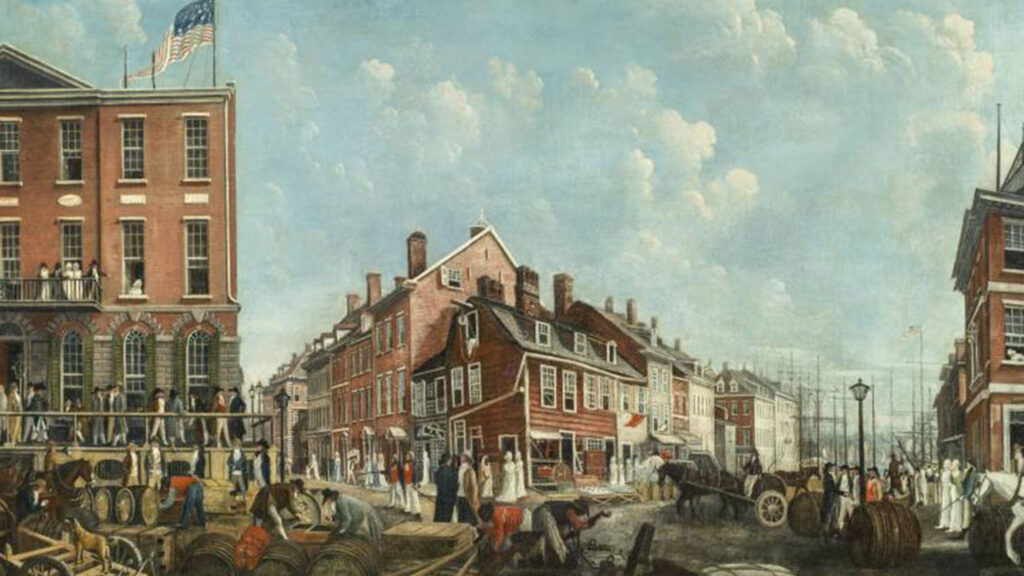
18th Century: Coffee Replaces Tea in the New World
In the mid-1600s, coffee was brought to what is now New York City. Though coffee houses emerged and grew in popularity over the next century, tea was still the favored drink in the New World until King George III imposed a heavy tax on it in 1773. As you probably know, the tax ignited significant protest and led to the revolt known as the Boston Tea Party. As you may not know, that event didn’t just change the course of American history—it forever changed Americans’ beverage preference to coffee.
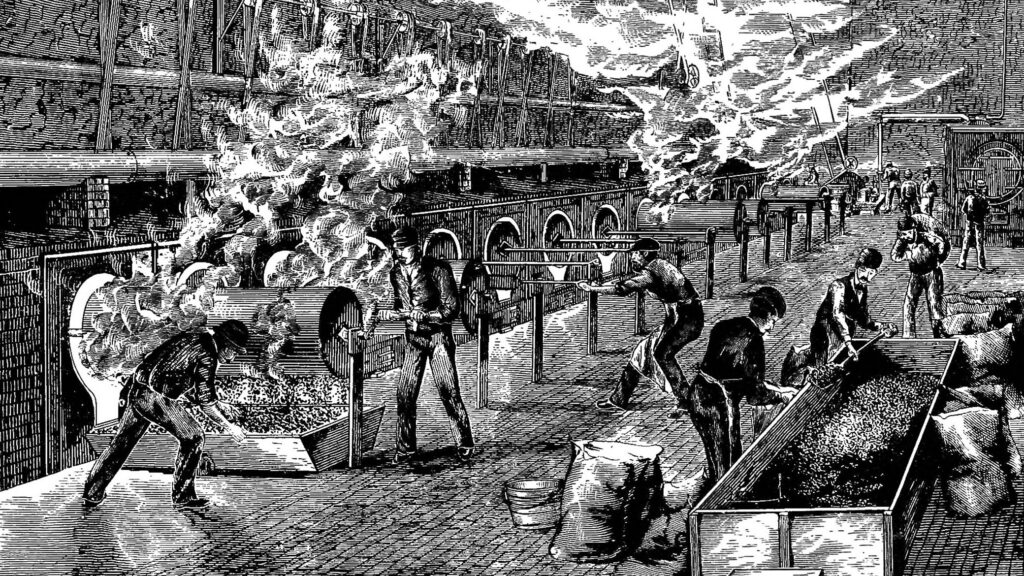
19th Century: One of the Most Sought-After Commodities in the World
Coffee continued its march around the world as missionaries, traders, colonists, and other travelers carried coffee seeds—and a taste for the beverage. During this time, the history of coffee paints a picture that is sweeping and dramatic. People planted coffee in the soils of magnificent tropical forests and rugged mountain highlands. Some crops thrived, while others withered. Fortunes were made and lost. New nations were founded on coffee economies alone. So much rested on such small, yet powerful, beans.
By the dawn of the 19th century, coffee was established as one of the world’s most profitable export crops. It was one of the most sought-after commodities in the world, second only to crude oil. In other words, you could find coffee at the center of global society—as you still can today!
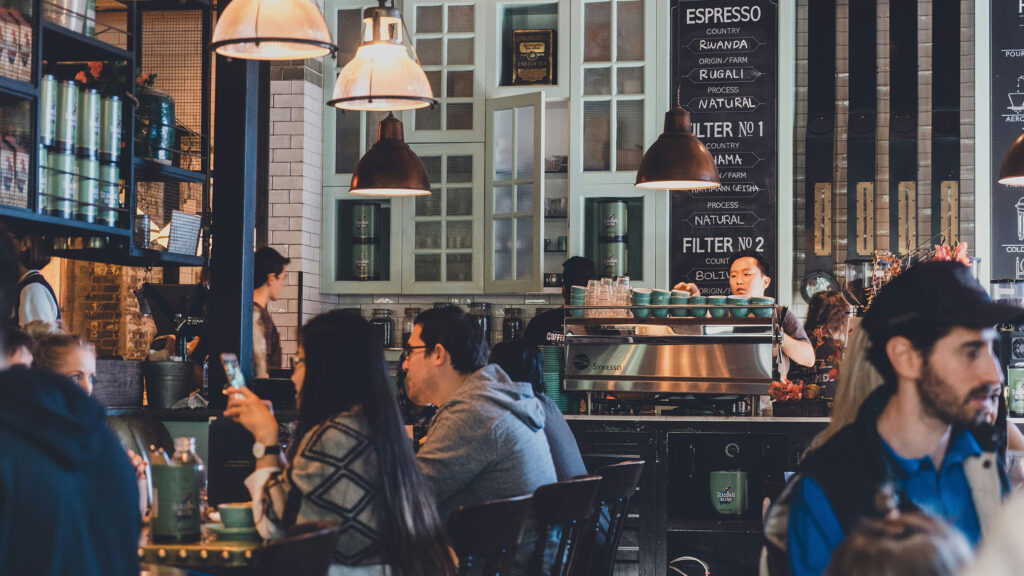
20th-21st Centuries: Growing the Coffee Community in the U.S.
Coffee—and the way we drink it—has continued to evolve. In the 20th and 21st centuries, we’ve seen several “waves” of coffee that represent both a type of coffee and an accompanying shift in coffee culture. The first wave of coffee arose as industrialization allowed for mass production. This is the coffee that first hit the shelves of grocery stores, and it provided functionality and convenience. Individuals, restaurants and other businesses could buy this coffee, sold in bulk and mostly pre-ground, and make it daily. There was little focus on origin, and few people in the U.S. even realized coffee grows on trees!
The second wave of coffee came with the rise of the coffee chains and brands, now ubiquitous in our global culture. With modern coffee shops—our equivalent of the coffee houses of previous centuries—a new coffee culture began to emerge, placing a greater emphasis not only on the quality of the coffee, but the experience. These social hubs allowed more people to experiment with new types of coffee, coffee drinks, and flavors—and to savor them.
As coffee drinkers began to develop more sophisticated palates, a third wave emerged—and this coffee is now often referred to as specialty coffee. This term can refer to many different types of coffee, but broadly, this wave represents a new level of quality, interest, and exploration. Coffee drinkers began looking for specific flavor profiles and single-origin coffees, as well as trying different roasts and brewing methods such as pour-over and French press. Interest in sustainability and transparency in coffee production also grew during this wave. And, new options have continued to emerge, such as ready-to-drink (RTD) coffee. This pre-made, refrigerated coffee is sold in a can or bottle and offers convenience for grabbing coffee on the go. We’re still learning and experimenting!
Sippable Fact
In 1911, one of the first trade associations in the U.S. was formed—the National Coffee Association. You can learn more about us if you like, but for now, back to our favorite beverage!
If all this history leaves you thirsty for more info on coffee, check out our modern coffee-growing regions— including those spotlighted above—and the lifecycle of coffee today.

